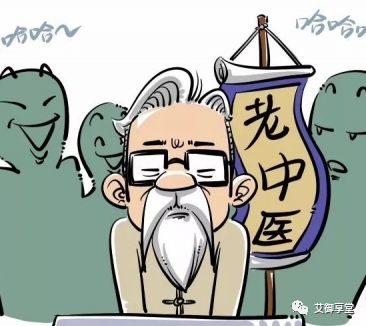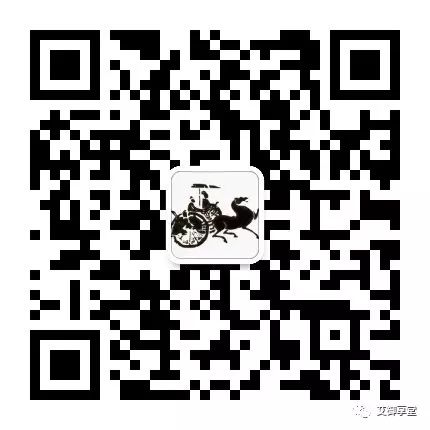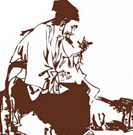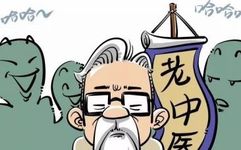May the profound principles of Qi Huang be passed down, igniting the seeds of life and health.

The Five Zang organs refer to the heart (xin), liver (gan), spleen (pi), lungs (fei), and kidneys (shen), which have the functions of transformation and storage. Their physiological characteristics include storing essence (jing) and qi without leaking, being full but not solid. The concept of the Five Zang in TCM is not limited to anatomical definitions. The term ‘Zang’ historically means ‘to store’. The primary physiological functions of the Five Zang are to transform and store essence, qi, blood, body fluids, and spirit, hence they are also called the Five Shen Zang. Since essence, qi, and spirit are fundamental to human life activities, the Five Zang play a crucial role in human existence.
1. Physiological Functions and Characteristics of the Liver
1.1. Governs the smooth flow of qi: The liver is responsible for the smooth flow of qi, which means it facilitates the movement of qi throughout the body. The physiological activities of all organs and tissues depend on the movement of qi. The liver’s ability to ensure the smooth flow of qi is vital for normal physiological activities. If the liver’s function is normal, qi flows smoothly, and the physiological activities of all organs are normal. Conversely, if the liver’s function is abnormal, various pathological changes may occur. The liver’s smooth flow function is primarily reflected in the following four aspects:
(1) Promoting blood circulation and fluid metabolism: The movement of blood and the metabolism of body fluids rely on the propulsion of qi and the smooth flow of qi. The physiological activities of the organs also depend on the smooth flow of liver qi.
(2) Promoting the transformation and transportation of the spleen and stomach and the secretion and excretion of bile: The liver’s smooth flow function can regulate the qi of the spleen and stomach, ensuring their ability to ascend clear and descend turbid, thus guaranteeing normal digestion and absorption. Additionally, the liver secretes and excretes bile, which is formed from the residual qi of the liver and aids in digestion.
(3) Regulating emotional activities: Emotional activities are governed by the heart but are closely related to the liver’s smooth flow function. Normal emotional activities depend on the smooth flow of qi, which the liver facilitates.
(4) Regulating the discharge of semen and ovulation: The normal onset and cycle of menstruation in women, as well as semen discharge in men, are closely related to the liver’s smooth flow function.
1.2. Governs blood storage
The liver’s function of storing blood refers to its ability to store blood, regulate blood flow, and prevent bleeding. The physiological significance of blood storage includes nourishing liver qi, regulating blood volume, moistening the liver and tendons, serving as the source of menstrual blood, and preventing bleeding.
The liver governs smooth flow, which is yang in function, and also governs blood storage, which is yin in nature, hence the saying “the liver is yin in essence but yang in function”.
1.3. Physiological characteristics of the liver
(1) The liver is a strong organ: This refers to the liver qi’s active and vigorous nature.
(2) The liver promotes upward movement: This indicates the liver’s role in elevating yang qi and regulating the flow of qi.
2. Physiological Functions of the Heart
2.1. The heart governs consciousness: The heart has the function of receiving, processing, and reflecting information, generating consciousness, thought, and emotions; it is the supreme organ among the five zang and governs the entire body. ‘Shen’ (spirit) is a broad concept often referring to the mysterious and miraculous aspects of things. In TCM, the basic meanings of ‘shen’ include both a broad sense and a narrow sense. The broad sense encompasses the functions and laws of material movement in nature and the manifestations of life activities in the human body; the narrow sense refers only to human mental activities, such as consciousness, thought, and emotions. Modern medicine considers mental activities to be physiological functions of the brain, which reflects external objective phenomena. However, TCM attributes mental activities to the heart based on several theoretical foundations:
1. Mental activities are associated with the five zang organs.
2. The heart is considered the site of mental activities.
3. Blood serves as the material basis for mental activities. The heart governs blood; when blood vessels are full, mental clarity is achieved.
In summary, the ancient belief that the heart is the ‘great master of the five zang and six fu’ is inseparable from its function of housing the spirit and governing mental activities. Therefore, Ming dynasty physician Zhang Jiebin pointed out in his work that “the heart is the master of the zang and fu, overseeing the soul and spirit; thus, when worry arises in the heart, the lungs respond; when thought arises in the heart, the spleen responds; when anger arises in the heart, the liver responds; when fear arises in the heart, the kidneys respond; hence, the five emotions are all governed by the heart.” He also stated, “Although emotional injuries belong to the five zang, they all originate from the heart.” Thus, while mental activities can be associated with the five zang, they primarily belong to the heart’s governing function. Therefore, when the heart’s governing function is normal, the spirit is uplifted, mental clarity is achieved, thinking is agile, and responses to external information are sensitive and normal. Conversely, if the heart’s governing function is abnormal, it can lead to disturbances in mental activities, resulting in insomnia, vivid dreams, restlessness, or even delirium; or it may cause sluggish responses, forgetfulness, mental fatigue, or even coma.
2.2. The heart governs blood vessels: It has the function of circulating and generating blood. ‘Governing’ implies management and control. Blood refers to the vital substance of the body, while vessels refer to the channels through which qi and blood flow, also known as ‘blood houses’ in TCM. The heart’s governance of blood vessels means that the heart’s physiological function is to propel blood through the vessels. The heart is located in the chest, connected to the vessels, forming a closed circulatory system.
The heart beats continuously throughout a person’s life, delivering blood to all organs and tissues via the vessels to maintain normal life activities. The rhythmic beating of the heart corresponds with the rhythmic pulsation of the vessels, known as the ‘pulse’, which can be directly felt at certain points on the body.
For example, the pulse can be felt at the side of the neck (ying pulse), wrist (cun kou pulse), and the dorsum of the foot (fu yang pulse). TCM uses the pulse’s rhythm at these points to understand the overall state of qi and blood, serving as a basis for clinical diagnosis, known as ‘pulse diagnosis’.
The heartbeat can also be felt beneath the left breast, an area referred to as ‘xu li’. Feeling the pulse at xu li aids in diagnosing heart diseases.
The face has a rich supply of qi and blood, and the state of the heart’s qi and blood is often reflected in the color and luster of the face, hence the saying that the heart’s vitality is manifested on the face. Observing the color is also an important method in TCM for diagnosing diseases.
TCM believes that the heart’s ability to beat normally and propel qi and blood relies on the strength of heart qi. Under physiological conditions, when a person’s heart qi is robust, the physiological function of propelling blood is normal, and the smooth flow of qi and blood ensures normal physiological functions, reflected in a rosy and radiant complexion, a regular and strong pulse. If the heart’s governance of blood vessels is dysfunctional, it can lead to corresponding pathological changes, primarily manifested in the following aspects:
1. Insufficient heart qi: This means that the heart’s essence is deficient, reducing its ability to propel blood. Symptoms may include palpitations, a pale complexion, and a weak pulse.
2. Blood stasis in the heart: If heart qi is insufficient, blood circulation may be impaired, leading to blood stasis in the heart. Symptoms may include palpitations, chest tightness or pain, a gray complexion, cyanosis of the lips, and irregular pulse.
3. Heart blood deficiency: The normal function of the heart governing blood vessels relies on strong heart qi, sufficient blood volume, and unobstructed vessels. If heart blood is deficient, the vessels may not be filled, leading to symptoms such as palpitations, a pale complexion, and a weak pulse.
3. Physiological Functions and Characteristics of the Spleen
3.1. Governs transformation and transportation: The spleen is responsible for digesting food and absorbing its essence (guo jing) and fluids (shui jing), then transporting them to the heart and lungs to nourish the entire body. Since the spleen absorbs both essence and fluids, its function can be divided into two aspects: one is the transformation of essence, and the other is the transformation of fluids. The transformation of essence refers to the absorption of nutrients from digested food and their transportation to the heart and lungs to nourish the body. Since these nutrients are the primary materials for generating qi and blood, the spleen is also called the source of qi and blood transformation, “the spleen governs the stomach’s fluids”. The transformation of fluids refers to the absorption of some fluids from digested food, which are transformed into body fluids and transported to the heart and lungs. However, the functions of transforming essence and fluids are closely related and cannot be completely separated.
3.2. Governs blood generation and containment: The spleen generates blood, as the essence from food is transported to the heart and lungs to be transformed into blood. The spleen also governs blood containment, as spleen qi has a consolidating effect, preventing blood from leaking out of the vessels.
3.3. Governs the upward movement of clear substances: The spleen transports the essence of food and fluids upward to the heart and lungs, generating qi and blood to nourish the entire body; it also maintains the relative stability of the internal organs to prevent them from descending.
3.4. Physiological characteristics of the spleen
(1) Spleen qi governs upward movement: This refers to the spleen qi’s movement, primarily characterized by its upward movement, specifically in elevating clear substances and supporting the internal organs. ‘Clear’ refers to the essence of food and fluids. The term ‘elevating clear’ indicates the spleen’s role in absorbing and transporting nutrients to the heart, lungs, and head, where they are transformed into qi and blood to nourish the body. Thus, it is said that “the spleen is healthy when it elevates”. The upward movement of the spleen also helps maintain the relative stability of the internal organs, preventing them from descending.
(2) Prefers dryness and dislikes dampness: The spleen’s ability to elevate and transport is contingent upon its dry nature, which should not be hindered by phlegm or dampness. Hence, it is said that “the spleen elevates when dry”.
4. Physiological Functions and Characteristics of the Lungs
4.1. The lungs govern qi: The lungs are responsible for inhalation and exhalation, participating in the formation of zong qi, thus governing the qi of the entire body.
4.2. The lungs assist the heart in governing blood vessels.
4.3. The lungs govern the dispersal and descending of qi.
4.4. The lungs govern the movement of fluids, regulating fluid metabolism, serving as the upper source of fluids, transporting body fluids throughout the body; distributing essence, fluids, and nutrients; dispersing defensive qi to the surface; descending body fluids to the bladder; and clearing the respiratory tract while inhaling clear qi.
5. Physiological Characteristics of the Lungs
(1) The lungs are the ‘canopy’ and ‘delicate organ’: The lungs are referred to as the canopy because they are located at the highest point in the thoracic cavity.
The lungs are delicate organs, meaning they are light, clear, and quiet, intolerant of foreign invasion, hence they are considered tender organs.
(2) Governs dispersal and descending: The lungs govern dispersal, meaning lung qi has the function of ascending and dispersing: firstly, through lung qi, expelling turbid qi from the body; secondly, distributing the fluids and nutrients transported by the spleen throughout the body, reaching the skin; thirdly, dispersing defensive qi and regulating the opening and closing of the pores, transforming post-metabolic fluids into sweat for excretion; the lungs govern descending, meaning lung qi has the function of clearing and descending: firstly, inhaling clear qi from the environment and distributing zong qi downwards to nourish the lower abdomen; secondly, distributing the clear qi inhaled by the lungs and the fluids and nutrients transported by the spleen downwards; thirdly, transporting the turbid fluids produced by the organs down to the kidneys and bladder, which is the source of urine production.
5. Physiological Functions and Characteristics of the Kidneys
5.1. Store essence and govern growth, development, reproduction, and organ qi transformation: (1) Essence, in a narrow sense, refers to the reproductive essence inherited from parents and stored in the kidneys, known as congenital essence. Postnatal essence comes from the refined substances of food and fluids, hence it is said that “the kidneys govern water and store the essence of the five zang and six fu”. Therefore, the composition of kidney essence is based on congenital essence and relies on postnatal essence for nourishment. Congenital and postnatal essences support each other. When the body reaches a certain developmental stage, the reproductive functions mature, and kidney essence can transform into reproductive essence for discharge.
(2) Governs reproduction: This refers to the physiological functions of kidney essence and its transformed qi. Essence is the fundamental substance that constitutes and maintains life activities, promoting growth, development, and reproduction. The state of human growth and development can be reflected in hair, teeth, bones, and reproductive functions. The development of reproductive organs, the maturity and maintenance of sexual functions, and reproductive capacity are closely related to the essence and qi in the kidneys. When the body reaches youth, the essence and qi in the kidneys gradually become abundant, and the reproductive organs mature, producing a substance known as ‘tian gui’, which promotes the development and maintenance of sexual functions. Sexual intercourse leads to conception.
(3) Promotes and regulates organ qi transformation: Organ qi transformation refers to the rise and fall of qi in the organs, which drives and regulates the functions of the organs, thus promoting and regulating the metabolism of essence, qi, blood, and body fluids, and their energy transformations. Kidney qi is transformed from kidney essence, and the kidney essence, kidney qi, and their differentiated kidney yin and kidney yang play crucial roles in promoting and regulating organ qi transformation. Kidney yin has cooling, calming, inhibiting, and consolidating effects, while kidney yang has warming, promoting, exciting, and dispersing effects. Kidney yang is the source of all yang qi, while kidney yin is the source of all yin qi, hence it is said that “the yang qi of the five zang cannot arise without this”, and “the yin qi of the five zang cannot be nourished without this”. When kidney yang is abundant and kidney yin is sufficient, the physiological functions of the organs are normal, and organ qi transformation can function normally.
5.2. Governs water: The kidneys govern water, meaning kidney qi has the function of overseeing and regulating the metabolism of body fluids throughout the body. This is primarily reflected in two aspects:
(1) The promoting effect of kidney qi on the organs involved in fluid metabolism.
(2) The kidney qi’s role in urine production and excretion.
5.3. Governs the inhalation of qi: The kidneys govern the inhalation of qi, meaning kidney qi has the function of receiving the clear qi inhaled by the lungs, maintaining the depth of inhalation, and preventing shallow breathing.
5.4. Physiological characteristics of the kidneys: The kidneys govern storage and protection, indicating their physiological characteristics of concealment and safeguarding, which also summarize their essence-storing function. Their functions of inhalation, reproduction, and regulating excretion all reflect the essence of concealment. This corresponds with the winter season.
Read more exciting contentDiscussion on the concept of ‘Phlegm’ in TCMBenefits of napping during the day!How to supplement the five elements for those who are incomplete?Effective acupuncture points for treating blood and pain disorders11 different effects of ‘Di Huang Wan’Using moxibustion on the Huan Kuan point to eliminate various ailments!Simple discussion on the treatment of numerous diseases (very powerful)Illustrated guide to the differentiation of the six meridians (very powerful)Diagram of the circulation of qi and blood in the human organs (very powerful)Commonly used formulas and their patternsCharacteristics of lumbar disc herniation in the elderlyThe current state of TCM is a rare skill for a fewFor those who doubt TCM and those who want to learn it, please take a close look!Characteristics and effects of Jing pointsPersonality analysis of those with ‘Ban Xia’ constitutionWhere to start with acupuncture practice?


This article is for clinical reference only; non-professionals in TCM should not attempt to use herbs.
All information, except for authorship, is sourced from the internet, and copyright belongs to the original authors.
 ID:hnbfdycx-ayc21w
ID:hnbfdycx-ayc21w

Ai Yu Xiang Tang
Daily compilation at dawn; if you find it worth reading,
please share it with more friends and give the author a at the bottom right corner.
at the bottom right corner.
Your support is thedriving force for Ai Yu Xiang Tang to keep updating.

